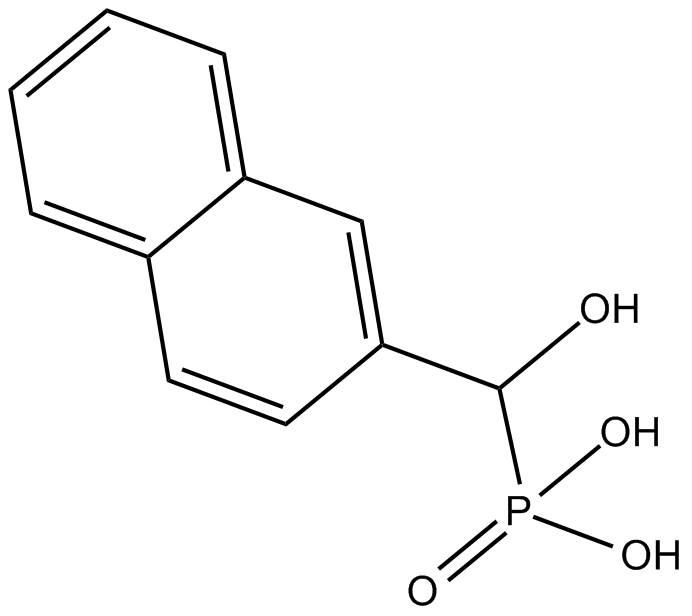HNMPA (Synonyms: Hydroxy-2-naphthalenylmethyl Phosphonic Acid) |
| Catalog No.GC13988 |
Le HNMPA est un inhibiteur de la tyrosine kinase du récepteur de l'insuline imperméable À la membrane.
Products are for research use only. Not for human use. We do not sell to patients.

Cas No.: 132541-52-7
Sample solution is provided at 25 µL, 10mM.
HNMPA is a tyrosine kinase inhibitor that inhibited both the receptor serine and tyrosine phosphorylation, including insulin receptor tyrosine kinase activity [1].
Receptor tyrosine kinases (RTKs) are the high-affinity cell surface receptors for growth factors, cytokines, and hormones. The insulin receptor is one of a number of growth factor receptors with intrinsic tyrosine kinase activity that can be activated upon ligands binding [1].
HNMPA (Hydroxy-2-naphthalenylmethyl Phosphonic Acid) is a tyrosine kinase inhibitor that blocks receptor serine and tyrosine phosphorylation. HNMPA does not affect protein kinase C or cyclic AMP-dependent protein kinase activities. HNMPA inhibited tyrosine kinase activity of autophosphorylated insulin receptor towards poly (Glu4, Tyr) or insulin receptor-(1155-1165) peptide by 82% and 81%, respectively. HNMPA also inhibited autophosphorylation of insulin receptors by 13% + 4.6% in the presence of insulin. HNMPA not only inhibited insulin receptor tyrosine phosphorylation but also effectively decreased insulin receptor serine phosphorylation [1]. In β-cells exposed to high glucose, HNMPA was able to further increase the exe-4-induced insulin secretion [2].
References:
[1]. Baltensperger K, Lewis RE, Woon CW, et al. Catalysis of serine and tyrosine autophosphorylation by the human insulin receptor. Proc Natl Acad Sci U S A. 1992 Sep 1;89(17):7885-9.
[2]. Moon MJ, Kim HY, Park S, et al. Insulin contributes to fine-tuning of the pancreatic beta-cell response to glucagon-like peptide-1. Mol Cells. 2011 Oct;32(4):389-95.
Average Rating: 5 (Based on Reviews and 29 reference(s) in Google Scholar.)
GLPBIO products are for RESEARCH USE ONLY. Please make sure your review or question is research based.
Required fields are marked with *




















